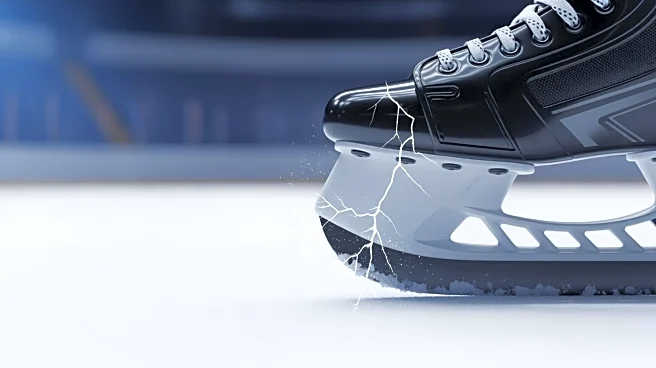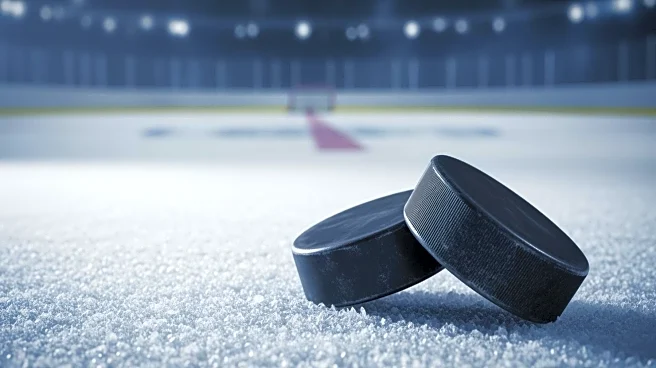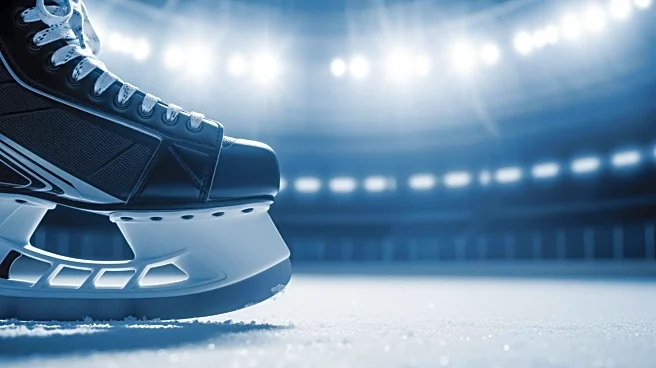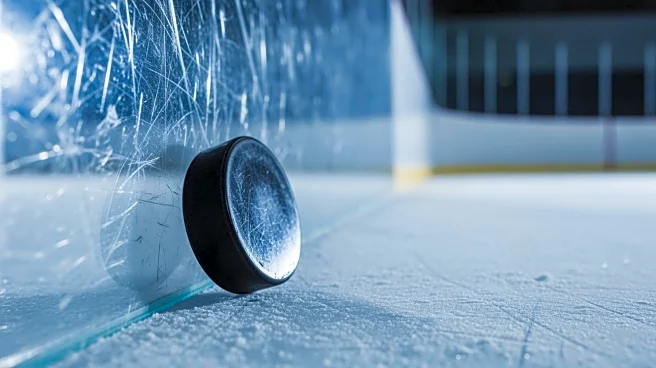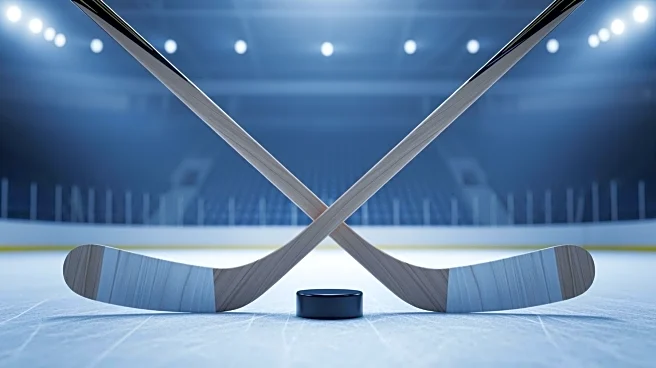What's Happening?
Boston Bruins defenseman Charlie McAvoy was injured during a game against the Montreal Canadiens on November 15, when he was struck in the face by a puck. The incident occurred midway through the second
period, forcing McAvoy to leave the game at Montreal's Bell Centre. Coach Marco Sturm reported that McAvoy was bleeding and required assistance to exit the ice. McAvoy is one of the first six players named to the U.S. Olympic team, and his injury adds to a growing list of injured U.S. Olympians. Other players, including Matthew Tkachuk, Brady Tkachuk, Quinn Hughes, Auston Matthews, and Jack Eichel, are also dealing with various injuries, potentially affecting their participation in upcoming Olympic events.
Why It's Important?
The injury to Charlie McAvoy is significant as it impacts both the Boston Bruins and the U.S. Olympic team. McAvoy's absence could affect the Bruins' defensive lineup and strategy in upcoming games. For the U.S. Olympic team, the injury adds to concerns about the readiness and availability of key players for the Olympics. With several top players already sidelined, the team's performance and chances at the Olympics could be compromised. This situation highlights the challenges teams face in maintaining player health and readiness for major international competitions.
What's Next?
Coach Marco Sturm indicated that McAvoy is undergoing tests and hopes to return home with the team soon. The U.S. Olympic team will need to assess the situation and consider potential replacements or adjustments to their roster. The deadline for submitting Olympic rosters is December 31, which gives the team some time to make decisions based on the recovery progress of injured players. The Bruins will also need to strategize for upcoming games without McAvoy, potentially adjusting their defensive lineup to compensate for his absence.
Beyond the Headlines
The series of injuries among U.S. Olympians raises questions about player safety and the physical demands of professional hockey. It may prompt discussions on improving protective gear or revising training and recovery protocols to better safeguard athletes. Additionally, the situation could influence how teams manage player workloads and recovery times, especially leading up to major events like the Olympics.
